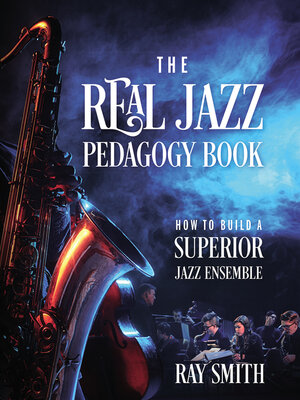
Sign up to save your library
With an OverDrive account, you can save your favorite libraries for at-a-glance information about availability. Find out more about OverDrive accounts.
Find this title in Libby, the library reading app by OverDrive.



Search for a digital library with this title
Title found at these libraries:
| Loading... |
Written by a jazz teacher for jazz teachers, "The Real Jazz Pedagogy Book" is based on the premise that successful jazz teachers must be constantly working four main areas: 1) the wind instruments-including tone production, intonation, and section playing skills; 2) playing styles correctly-such as rhythmic and time feel approach, articulation approach, and phrasing; 3) the rhythm section-playing the instruments, time feel and concept, coordination of comping, harmonic voicings, drum fills and setups, stylistic differences; and 4) the soloists-developing improvisational skills (both right brain and left brain), jazz theory, the ballad soloist, and the vocal soloist. Ray Smith, who has taught and directed jazz ensembles, including the acclaimed Brigham Young University group, Synthesis, and given private lessons for over forty years, also discusses the details of running school programs. Smith's YouTube channel complements "The Real Jazz Pedagogy Book."|Written by a jazz teacher for jazz teachers, "The Real Jazz Pedagogy Book" is based on the premise that successful jazz teachers must be constantly working four main areas: 1) the wind instruments-including tone production, intonation, and section playing skills; 2) playing styles correctly-such as rhythmic and time feel approach, articulation approach, and phrasing; 3) the rhythm section-playing the instruments, time feel and concept, coordination of comping, harmonic voicings, drum fills and setups, stylistic differences; and 4) the soloists-developing improvisational skills (both right brain and left brain), jazz theory, the ballad soloist, and the vocal soloist. Ray Smith, who has taught and directed jazz ensembles, including the acclaimed Brigham Young University group, Synthesis, and given private lessons for over forty years, also discusses the details of running school programs. Smith's YouTube channel complements "The Real Jazz Pedagogy Book."






